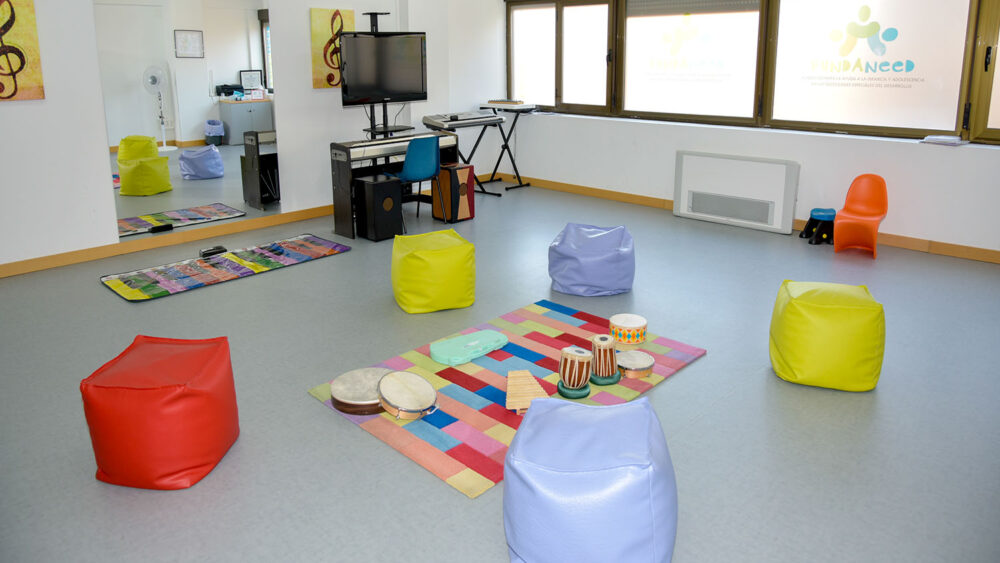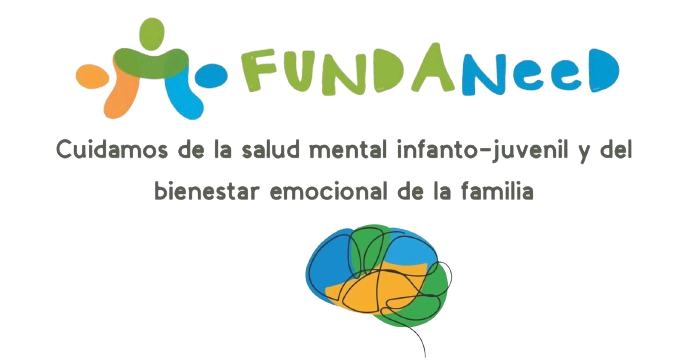Often families of children or adult patients ask us music therapy professionals about the true essence of our work, or in more obvious words, they often question us about our therapeutic work. In this short article I would like to explain some of the most basic notions that describe the discipline of Music Therapy, since it is quite common for our way of working to be mistaken for that of a music teacher, especially if our patients are minors.
I will start by saying that patient or client are terms that are not really agreed upon within the profession. Perhaps in Latin countries music therapists are more inclined to use the word patient, while the more Anglo-Saxon tradition prefers the term client. Personally I think the reasons are primarily cultural, not just etymological, but in any case, what we must be clear about is that a person who decides to go to a music therapy session will have a guarantee of full care and dedication to their health and wellbeing, regardless of what their relationship with the therapist is called.
The question is that patient or client are terms that depend on the legislation in force in each country or each region, since the health reality is not uniform, as it depends on different circumstances, for example the territory in which we live, or the medical insurance we have, something that will become increasingly common, as our medical or therapeutic relationship is increasingly dependent on all these circumstances, some of them of a commercial nature, not only of a territorial nature. Of course, music therapists are no strangers to the reality that surrounds the rest of the socio-health professionals, all of whom are dedicated to the care and attention of people’s health.
The first difference between a teacher and a therapist is that the latter is fundamentally concerned with people’s health, which is precisely why he or she must abide by a code of ethics of professional behaviour that does not exist in education, at least as such, in black and white. This code reflects issues such as the quality of the treatment received by the therapist, or the confidentiality of everything that happens in each session.
Therefore, the relationship that is established between patient and therapist is therapeutic in nature, it is a special bond in which the whole person is contemplated in a humanistic and holistic way. Therapist and client are a tandem, because both interact in order to evolve in the expressiveness and emotionality of each person, enhancing their creativity, establishing a friendly and serene treatment in which different paths can be explored so that the patient can find their own creative abilities, with the absolute conviction that these will be the ones that enhance and motivate the improvement of each patient, according to their needs.
Of course, a teacher or professor maintains a close and emotionally close relationship with his or her students, based on trust if possible, but the objective of this relationship is eminently didactic, that is to say, it is teaching-learning. The best music therapy teachers usually teach that healing requires teaching, and in the same way teaching is also part of healing. Let’s say that when you teach as a teacher you not only transmit knowledge, in a way you also teach how to live, but it is important to understand that the primary objective of education is teaching, as well as correct learning, sometimes transferring knowledge to the students that is not particularly significant for the people who learn, neither emotionally nor existentially speaking.
A therapist does not have to teach, indeed, very often interacts in an open way without adhering to a curriculum, because it is not due to a training, but it is due to the integral health of his patient. For this reason, the sessions are dynamic and open, and for this very reason their sessions must be open to improvisation and adaptability. The music teacher monitors a training, the music therapist is part of the evolutionary process of a session, he does not give lessons, but is part of the essence of each experiential session.
This explains why in Music Therapy, music is not an aesthetic end, much less the main objective, but a means to search, exploring ways to improve the deficiencies, while enhancing the existing capabilities of each patient. Moreover, depending on the circumstances and the patient, the music therapist may exclude the use of music, sound, or even the spoken or written word.
Certainly sessions can be individual or group sessions, which is often another difference with standardised education. The therapist should start by setting up individual sessions before integrating a patient into a group session. He or she must consider whether the process of improvement of each individual patient is safeguarded, including the due guarantee of intimacy that occurs during the whole process of personal introspection.
Of course, a creative therapist must seek ways for the integration and social adaptation of his patients, but ultimately the health of his patient, the potentialities that make him an individual and unrepeatable being, will always come first, something that evidently is not necessarily observed in normalised education, perhaps due to lack of time, or inability to pay attention, since a teacher is responsible for the training of many students, something that requires a very different approach.
The working set also differs in this comparison, since a music class is not the same as a music therapy room, neither in its conception nor in its spatial organisation. A music therapy room should be open and comfortable, with a non-hierarchical space. Musical instruments should be placed spatially depending on each session and each patient, in the same way as a doctor or a pharmacist would do with the appropriate treatment or drug in each specific case. The patient must have the possibility to move freely, that is, with absolute freedom and intimacy, only limited by the therapist in everything that the professional understands that does not facilitate the evolution or the advance of the most constructive creative capacities of the person, for him/herself and for others, in that order.
A professor or teacher is bound by a curricular order of ministerial origin, and his or her way of assessing is largely consensual by law, whereas a music therapist follows a behavioural observation methodology of a scientific nature. Thus, the therapist must take notes, recording what happened before, during and after each session, attaching the records of recently treated patients and archiving the old ones, in order to be able to assess their evolution in real time. We must bear in mind that a music therapist can and usually works in interdisciplinary groups, and therefore has to be able to work in an intermediate space between science and art.
The methodologies are diverse, as the influences of music therapy are also diverse. Sometimes several methodologies occur within the same session. This subject is sufficiently extensive to dedicate several specific articles to it in sufficient detail, a good reason to quote all of you, dear readers, in future articles dedicated to talk in depth about the different schools that exist within Music Therapy as a therapeutic discipline.
César Pascual Vallejo / Music Therapist



Comments are closed.